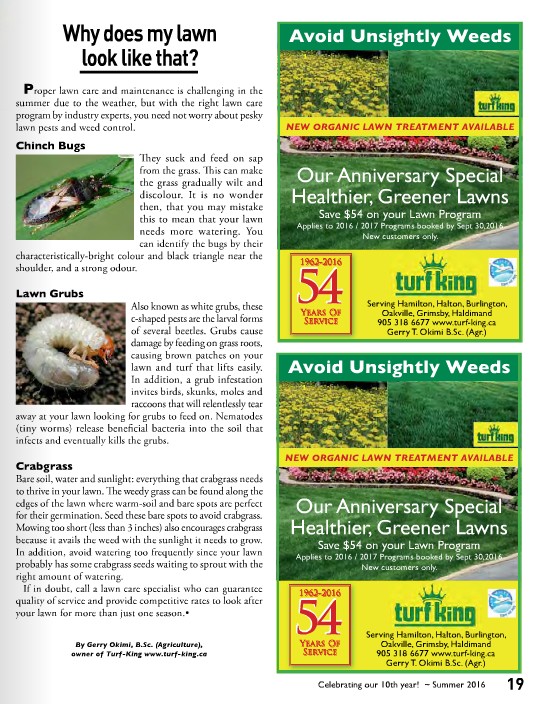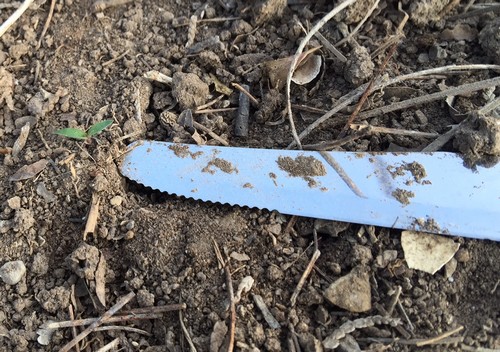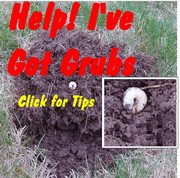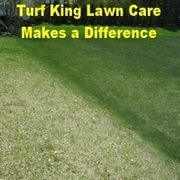Proper lawn care and maintenance is challenging in the summer due to the weather, but with the right lawn care program from Turf King, reputable industry experts, you need not worry about pesky lawn pests and weed control.
Chinch Bugs
Chinch bugs suck and feed on sap from the grass, without which the grass cover will gradually wilt and discolor. It is no wonder then, that you may mistake this to mean that your lawn needs more watering. You can identify the bugs by their characteristic bright color and black triangle near the shoulder and a strong odor.
Lawn Grubs
Also known as white grubs, these c-shaped pests are the larval forms of several scarab beetles. Grubs cause damage by feeding on grass roots, causing brown patches on your lawn and turf that lifts so easily. In addition, a grub infestation invites birds, skunks, moles and raccoons that will relentlessly tear away at your lawn looking for the grubs to feed on.
Nematodes release beneficial bacteria into the soil that infects and eventually kills the grubs.
Crabgrass
Bare soil, water and sunlight. Everything that crabgrass needs to thrive in your lawn. The weedy grass can be found along the edges of the lawn where warm-soled bare spots are perfect for their germination. Seed these bare spots to avoid crabgrass. Mowing too short(less than 3 inches) also encourages crabgrass because it avails the weed with the sunlight it needs to grow. In addition, avoid watering too frequently since your lawn has some seeds just waiting to sprout with the right amount of watering.
At Turf King, we offer lawn care programs at competitive rates and guarantee quality services in lawn pest and weed control. Call us today for more information.

Gerry Says
For the gourmet chefs- it seems that "baby" vegetables are the way to prepare foods in a new way. Baby carrots, baby spinach, baby peas.
Is this a good thing for a world where we have a food shortage? If we let the crops grow to maturity, we would have more food. Instead of harvesting the vegetables when they are young, the same plant will produce a lot more edible produce if left to maturity. Are 'baby' crops a waste of resources?
Anyways, I digress.
Was harvesting some asparagus in the garden today. In the soil, I can see a few weeds starting to germinate. Clover and crabgrass. Clover will germinate with cooler soil temperatures- so I have been pulling them out for some time.
Crabgrass on the other hand needs warm soil temperatures before it will germinate. In lawns that are shaded by the grass blades, it takes longer for the soil to warm up. In my asparagus bed, there is almost no shade. An asparagus spear casts very little shade. So here is a photo of a "baby" crabgrass. The crabgrass seedling is just starting to grow. Just before pulling it out, I thought a photo may be helpful.

Young crabgrass plants are harder to identify. Once they become more mature, their characteristics are more easily noticed. Then they are a problem for lawn care operators.
In a lawn with a good stand of grass, the soil will likely be still too cool for the crabgrass to germinate. If, however there is a patch of bare soil in your lawn, the crabgrass may have an opportunity to sprout and germinate.











